Homesteading off the grid is an adventure, and homesteading off the grid as a family takes the adventure to the next level! If you are not familiar with our story, my family lived completely off the grid for five months as we prepared our homestead to build our house.
Homesteading Off the Grid
I tell people all the time that living off the grid it is not for the faint of heart. But with the proper equipment and a flexible mindset, it is something that can be achieved.
These tips will be focused on living off the grid for a short and determined amount of time. It was never our intention to live off the grid permanently. This was simply a short term solution for us while we worked on installing our utilities.
We were pretty minimalistic in our setup because we did not want to invest too much in items that we were using for a temporary situation.
Homesteading off the grid requires some specialized equipment. While I cannot speak to the cost of creating a permanent off grid setup, I can say for certain that the investment to create a short term set up is achievable.
Here are insider secrets that will help you discover if living off the grid is worth it for you.
1. Check local regulations
The absolute very first thing you need to do before you jump into living off the grid is to check your local guidelines. Zoning and other factors will affect whether or not you are permitted to live off the grid in your area. The best way to find out this information is to contact your county Planning and Zoning office.
Homesteaders are independent people, and sometimes we like to work around situations. But it is really important to establish a friendly and productive relationship with your local Planning and Zoning office.
I promise it will help you in the long run! For our situation, we were able to live off-grid because it was noted as part of our building permit for our house. My best advice is to do your research and abide by the local guidelines in your area.
2. Know what you will live in
Next you need to know what you are going to live in. In our case we lived in our popup camper. We already owned it before our move, and we knew that we would only be in it for a short time.
You can consider other options such as building a shed, a tiny house, or a larger camper could also suffice. I would not recommend living in a tent or any other tarp like structure as it would not have enough substance for you to live in safely and comfortably.
Popup campers are much more substantial than a regular tent. While it was rustic living, the popup camper provided us with outlets and air conditioning. We were able to use these “luxuries” even when we were off grid because we had the right equipment (more on that later).
While we were homestading off the grid we were also building a storage shed. We had our household goods in a temporary storage situation and we built the shed so we could move our things out of the storage unit.
We entertained the idea of leaving our items in storage and finishing off the shed for us to move into. That could have worked well for us, but we did not want to funnel money from the house build into making the shed livable for us. Nor did we want to keep spending money on storage for out items.
So we decided to continue with our original plan and use the shed for storing our items while we continued living in the popup camper. We have not yet completed our house, so we have since upgraded to a full size travel trailer camper. This camper has a lot more amenities and we we are now hooked up to traditional utilities.
3. Know your options for power source
You will need to have some sort of power source to do simple things such as charging devices and running a fan or an air conditioner when it is hot. It is also helpful for using power tools, and an electric pressure cooker or slow cooker.
We also used our electricity source to heat up water in our electric tea kettle so we did not have to use as much propane on the camp stove.
We had two sources for power. First, we used this solar panel and connected it to the battery in our pop-up camper. With that we were able to run our lights and charge our phones, as well as run a fan. When it got really hot in the summer we used our generator to run the air conditioner as needed.
Once we actually got our transformer and were connected to the grid, we honestly did not use grid power for awhile because we were so accustomed to living without it. Also the plug in for it was far away from where we had our little campsite setup.
Eventually I did start transporting the pressure cooker over to the plug in instead of using the generator. That was actually pretty entertaining because I would use a wheelbarrow to transport the pressure cooker back and forth (remember it was a long walk from our campsite to the transformer). And that is how my chili recipe became known in the family as Wheelbarrow Chili.
4. Have a source for water
One of the most important things to figure out from the beginning is where you are going to get your water from. In our case, we moved to completely raw land that had zero utilities so we had to figure out a plan for water.
Digging a well can be a good option depending on your area. In our area, digging successfully for a well can be hit or miss. Furthermore, we live in an area with a strong rural water system. We didn’t want to waste money on drilling and likely come up dry.
Therefore, we decided to run a water line from the road to our homestead site. But that took a significant amount of time to achieve because we had to go through the approval process and some other administrative tasks with our water district.
In the meantime we had to haul our water to the homestead. We are fortunate enough to live reasonably close to a state park. We purchased an annual pass to the park and visited regularly to fill up our large 6 gallon water jugs.
Many rural towns have places where you can buy bulk water and haul it in your own containers. This is a good option to explore in your area.
And a note on drinking water. While the water we were getting from the state park was potable, we did not feel comfortable drinking it unfiltered.
So initially, we purchased drinking water from the store but we did not like spending money on that, plus it creates a lot of plastic waste. So we decided to invest in a Berkey water filter. And it was such a great investment! We love the taste of the water and have greater peace of mind about the quality of the water that we are drinking.
5. Have a plan for waste disposal
Another extremely important thing is to have a plan for your waste disposal. This includes both trash and human waste.
We have trash service in our area so we signed up with a local company for a weekly pick up. If that is not an option for you, you will need to look into other ideas, whether that would be getting a large dumpster, or hauling your trash to a disposal place. Investigate what options you have in your area.
It is very important to have a proper plan for human waste. We followed the protocol from the Humanure Handbook. The book is very helpful and gives a lot of good information about how to safely handle human waste.
Remember to keep in mind local regulations and be prepared to follow the guidelines for your area, as this could differ elsewhere. We intially used a composting toilet similar to this, but we eventually decided it was easier to just use a regular 5 gallon bucket. We now have our septic system installed and we use that to empty the black tank on our camper.
6. Bathing and Laundry
Closely related to the topic of water is bathing and laundry. In regard to bathing, our proximity to the state park played in our favor. We utilized the public showers there regularly. We also had this solar shower that we used between visits to the state park.
For laundry, we initially used the Wonderwash and a clothes rack for drying. It worked well for awhile (and made me feel a bit like a real pioneer woman). It also did a decent job at keeping our clothes clean.
However, something to consider is if you are hauling in your water you have to be very careful with how you ration the water. It quickly became evident that it was not sustainable for us to use so much of our water on the laundry. It was fun, and slightly romantic, to be washing our clothes by hand everyday.
I will admit it was also fairly labor and time intensive, and with so many other projects to work on, we eventually set the Wonderwash aside. It’s a neat little machine, but it was not quite right for our situation.
At that point we started using a laundromat to wash our clothes. While we do not like spending money at the laundromat every week, it has worked well for us especially, in the colder months when it is not possible to do the laundry outside.
7. Plan for food storage
You will need to ensure that you are able to safely store your food that requires refrigeration. We invested in an Orca cooler and that essentially was our refrigerator.
We had to buy a lot of dry ice and regular ice to keep it at a safe temperature, but with careful attention it worked fine for us, even in the hot summer months.
You also need to consider food storage for your dry goods. We made sure to store all of our non refrigerated food inside the camper because there are many nocturnal critters that would enjoy eating our food if we left it unprotected outside.
8. Have a plan for cooking meals
Cooking meals will be something that you do often, so you will need to have a sustainable setup for this.
We had two main sources for cooking. The first was our propane camp stove the second was our electric pressure cooker. For the pressure cooker, initially I used our generator to power it (nothing like cranking on the generator to cook dinner!). But once we had our electricity installed I was able to plug the pressure cooker directly into the grid at our plugin site.
9. Have a backup plan in case of inclement weather or natural disaster
It is very important to have a back-up plan in case of inclement weather or natural disaster. This was actually something that we had to deal with quite a bit while we were living off the grid.
The summer that we were homesteading off the grid ended up being a particularly wet and stormy season, and there were a lot of big storms that rolled through. At one point we had to take shelter in a public restroom in a campground because of a tornado warning in our area.
Another night a big storm rolled through with high winds and hail. An additional tornado watch forced us to shelter at a neighbor’s house for a few hours. With so many unknown variables in weather, it is important to have a back up plan that you can put in place even in the middle of the night.
Check to see if there are public tornado shelters in your area. The town that we live closest to has a public shelter, and we always have that in mind.
10. Have some sort of storage facility
While it sounds like homesteading off the grid leads to a simple life of easy existence, the reality is quite different. We spent a lot of time, effort, and money in maintaining the systems to keep us going off grid. This included buying gas for the generator, buying ice for the cooler, hauling in water, doing laundry, and maintaining our waste system.
All of these things combined together often required a lot of our time and also required specialized equipment. We also have many tools that we use regularly, livestock goods, and our household items that are in storage.
In order to protect these items and to avoid paying storage fees, you may want to consider buying or building some sort of storage shed that allows you to safely store your items while you are living in your temporary situation.
We built our storage shed from scratch and it was a great learning experience for us. For additional storage and workspace, we added a lean to on three sides of the shed.
This structure has been invaluable to us. Since we are still living in a small space, we use the shed to store items that we need to keep handy, but do not have room for in the camper.
Conclusion
Homesteading off the grid short term as a family is something that can be achieved, but it requires planning and having systems in place. You want to set yourself up to not just survive, but thrive in your situation.
I know that living off the grid short term is a completely different situation from a permanent off the grid setup. My experience obviously lies in the temporary situation.
If you’re looking for more information on how to build your homestead to be off grid permanently, then I suggest you look at Accidental Hippies. Emily and her family built their homestead from scratch and their house is completely off the grid. She has a lot of helpful information.
Homesteading off the grid for a short time was overall a positive experience for us. It was not without its challenges, but the challenges made us more resilient and stronger in the end.
Because of our experience, we have a greater peace of mind knowing that we have the knowledge and equipment to run off grid in extenuating circumstances. Have you lived off the grid or are you considering it?
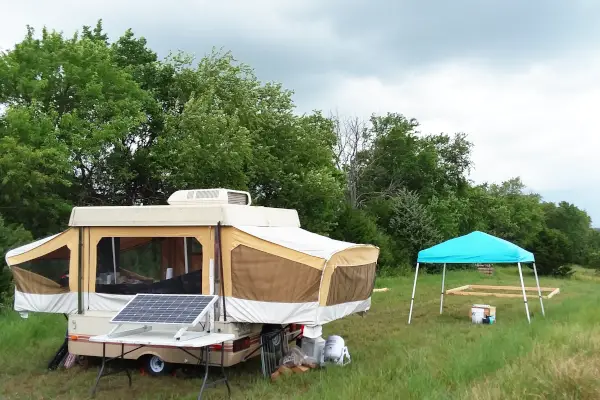
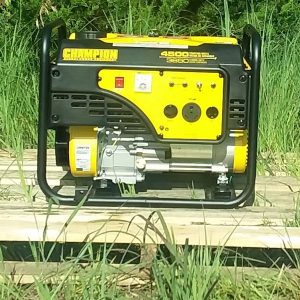
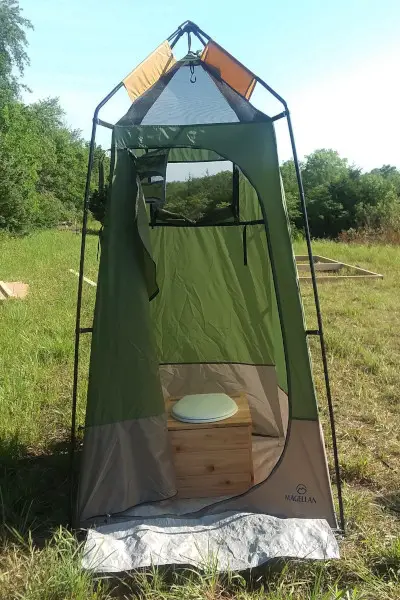
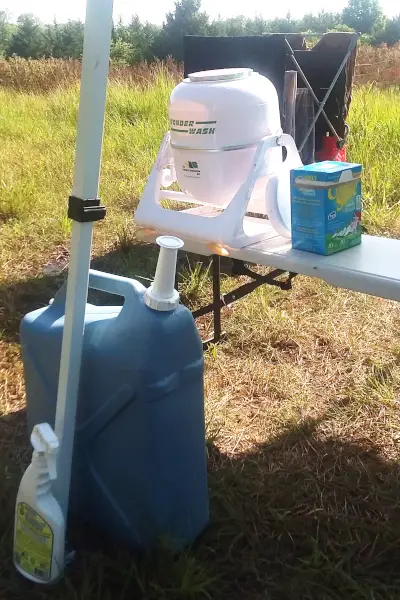
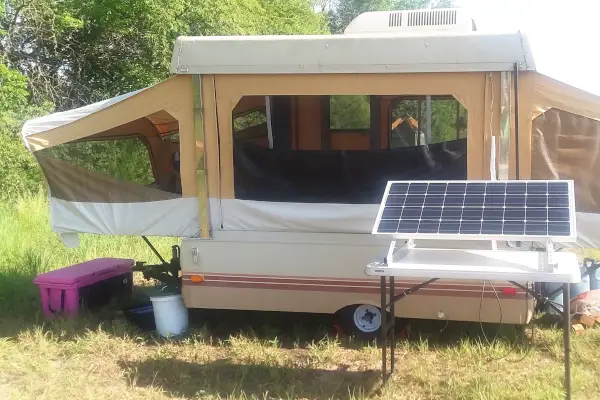
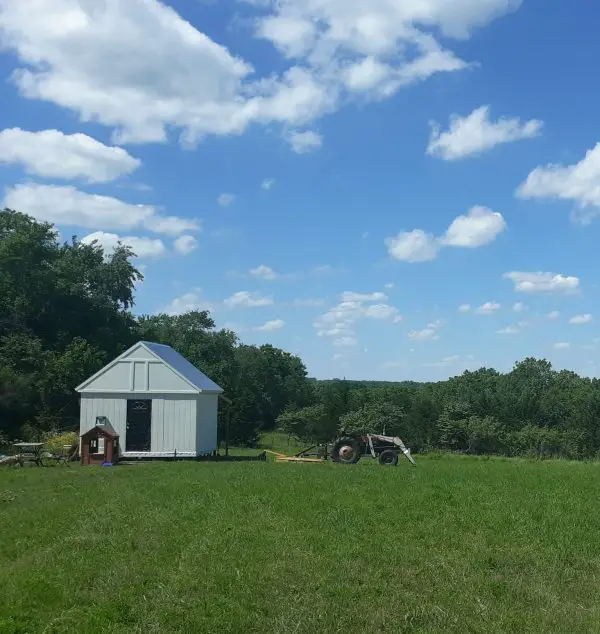
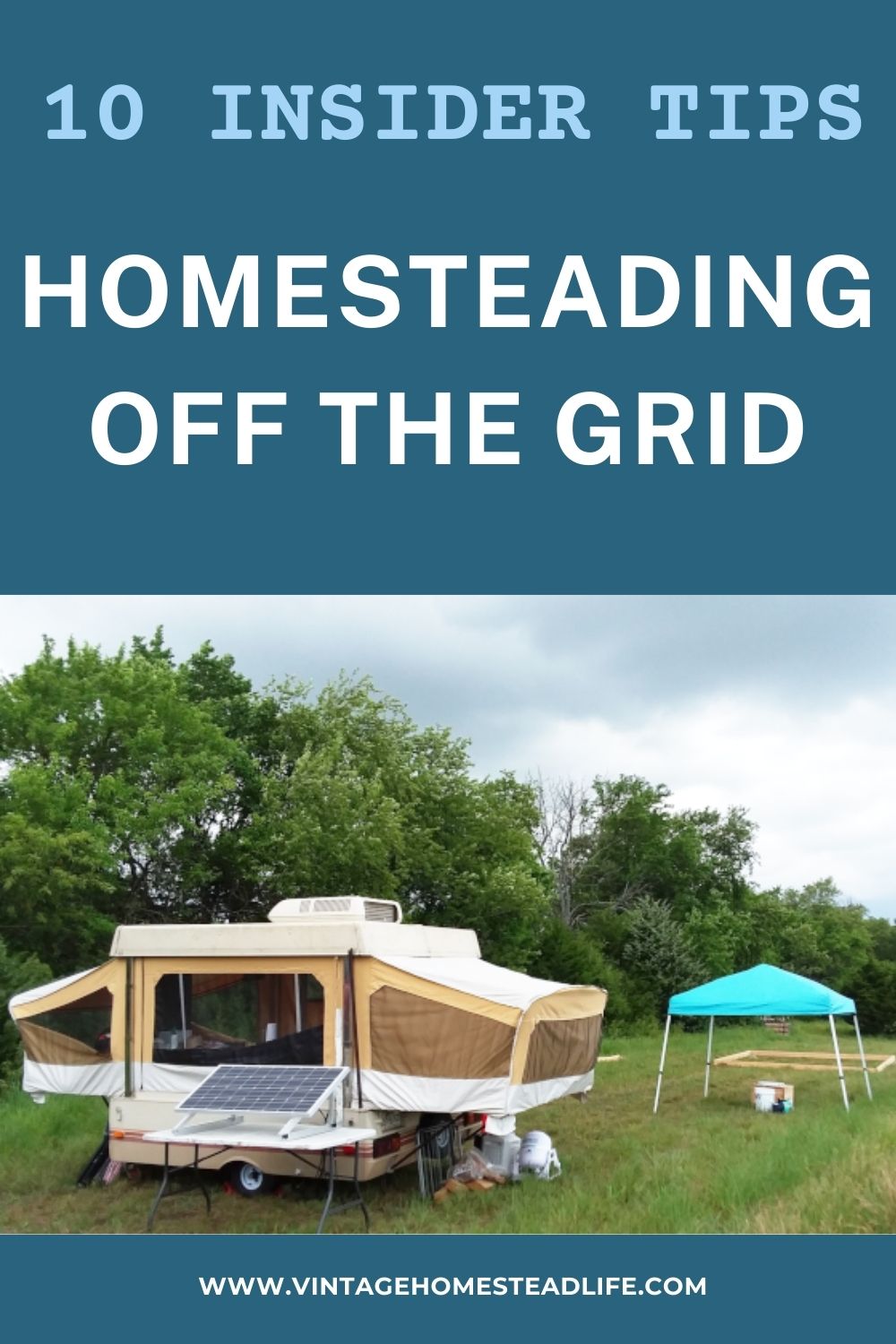

Leave a Reply